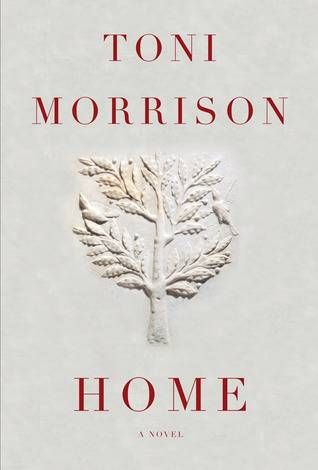
(re)Discovering Toni Morrison Outside Academia
This post is part of our Toni Morrison Reading Day: a celebration of one of our favorite authors on the occasion of her new novel, Home. Check out the rest right here.
__________________________
Unsurprisingly, it’s hard to find a reader who loves literary fiction who hasn’t ever read Toni Morrison. Her books are accessible and synonymous with modern southern literary tradition. Like many people, I first experienced Morrison in the classroom, on a required summer reading list.
As a military brat, I found that the reading lists I was assigned over the summers were representative of the community and geographic locations I happened to be planted in. In New Mexico, there were a lot of Native American stories. In Idaho, novels about settlers coming west. In South Carolina, I got Civil War fiction, southern gothics like Faulkner, and books that spoke to the African American experience. That meant Toni Morrison. I hate to say that the school board was checking boxes of what to teach – somehow I missed all of Hemingway and Steinbeck in my four years – but they often chose books that were reflective of the student body, and Morrison filled the quota for female black authors.
So every year, I had at least one Morrison novel on my summer reading list, and usually another one during the school year. I made my way through Sula, The Bluest Eye, Beloved, Song of Solomon, and Jazz, though never really grasping the full impact of each of those novels. In my high school brain, each was just one more Morrison I had to suffer through. All the themes and discussions were the same year after year, and maybe it was only an indication of the curriculum of my school, but I quickly grew bored of covering the same thing in every single English class.
Since graduating from high school, I hadn’t touched Morrison. I assumed that because I hadn’t enjoyed studying her work as a teenager, I had no reason to go back to it. I didn’t read Love in 2003 or A Mercy in 2008; in my head, all of Morrison’s works were the same. After all, that is what I had inadvertently been taught.
Until this year with the release of Home, it never occurred to me that I might have been approaching Toni with an outdated and immature sensibility. But it’s hard not to get excited about a book or an author when all your Riot colleagues are foaming at the mouth about a new release, and so I got swept up in the Toni Morrison fever and decided to give Home a shot. After all it’s been over 10 years since high school graduation and my literary awareness has gotten a bit more sophisticated – at least I hope it has.
I read Home in a span of just under 3 hours, during the 24-Hour Readathon a few weekends ago, and I tried to approach the book with no expectations, no preconceptions about “themes” or “symbolism” or larger social context, nothing that I would normally be watching for in an academic setting. I tried to read for the sake of reading, the way I would approach any new books – to enjoy the story, and nothing more.
Without any of that baggage weighing me down, I rediscovered Toni Morrison. And it was good. Not just good. Breathtakingly amazing. I read without expecting anything, without taking notes or with a future paper in the forefront of my brain. And I discovered a truth people have been trying to tell me for years: Toni is brilliant.
With no offense to those people, it’s a truth I had to come to on my own, like hating mushrooms your whole life and then deciding one day to give them another shot and finding you love them. Your palate just needed some time to grow up, to try a few more things by choice rather than by force. Yes, I recognized many of the themes and patterns that are common to Morrison’s work, but here, as just a Reader, I got to acknowledge them, like a nod of the head, and move on, rather than stopping, noting, and losing the thread of narrative.
Enough people will be talking about the book’s plot and the beautifully rendered characters and how expertly condensed the narrative is.* But if you, like me, haven’t read Morrison for many years and feel like you’ve seen all the things she can do, or if you’ve only approached her work in a classroom, I encourage you to try Home. It’s short enough at just 160 pages that you’ll experience enough to decide once and for all how you – You the reader, not You the student – really feel about Toni Morrison.
It makes me wonder what else I’ve been turning my nose up at because of the burden scholarly study foisted upon the works I might have loved. Maybe I should try Faulkner or Proust or Les Miserables again.
If I have anything close to the experience I had rediscovering Morrison, the journey into former syllabus-fillers might be well worth it.
Because, for me, it was like reading her for the first time the way she was meant to be read – purely for the joy of it.
*And it is all of those things. When I finished the book, I just sat for a solid 10 minutes, astounded that Morrison managed to squeeze so much story into such few pages. It is both awe-inspiring and incredibly intimidating. Especially as a writer that tends to be quite verbose.














